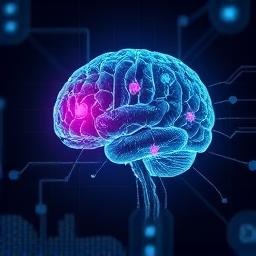Artificial Intelligence (AI) and Machine Learning (ML) are no longer futuristic buzzwords confined to science fiction. They are rapidly transforming industries, reshaping our daily lives, and presenting unprecedented opportunities for innovation and growth.
As we stand on the precipice of 2026, it’s crucial to understand the key AI trends that will dominate the landscape and, more importantly, how businesses and individuals can leverage them for success. This isn’t just about keeping up; it’s about seizing the future.
Why Should You Care About AI in 2026?
Frankly, if you’re not paying attention to AI, you’re falling behind. The impact of AI is pervasive, influencing everything from how we diagnose diseases to how we manage our finances. Ignoring its potential isn’t a viable option, especially considering the economic implications.
Businesses that embrace AI will gain a significant competitive edge, optimizing operations, enhancing customer experiences, and driving unprecedented levels of efficiency. Individuals who understand and adapt to AI will be better positioned for the jobs of the future, equipped with skills that are highly sought after and command premium salaries.
Here are the top AI trends poised to reshape our world :
The Rise of Generative AI: Creativity Deployed
Generative AI, the technology behind tools like DALL-E 2 and GPT-3, is poised for explosive growth. By 2026, we’ll see generative AI permeate every sector, from content creation and marketing to product design and drug discovery. Imagine:
Marketing: AI-generated marketing campaigns that are hyper-personalized and constantly optimized for maximum impact.
Product Design: AI algorithms that can generate countless product prototypes, accelerating the innovation process and reducing development costs.
Software Development: AI-powered code generation tools that can dramatically increase developer productivity and reduce the time to market for new applications.
The potential is limitless. However, businesses must be prepared to address the ethical and societal implications of generative AI, including issues of copyright, bias, and the potential for misuse. Investing in training and responsible AI development practices is paramount.
AI-Powered Healthcare: Precision Medicine and Personalized Care
The healthcare industry is ripe for disruption, and AI is leading the charge. By 2026, we’ll see AI playing an increasingly vital role in:
Diagnostics: AI algorithms that can analyze medical images with greater accuracy and speed than human radiologists, enabling earlier and more accurate diagnoses of diseases like cancer.
Drug Discovery: AI-powered platforms that can accelerate the drug discovery process by identifying potential drug candidates and predicting their efficacy.
Personalized Medicine: AI systems that can analyze patient data to develop personalized treatment plans tailored to individual genetic profiles and medical histories.
Remote Patient Monitoring: AI-powered devices and sensors that can remotely monitor patient vital signs and alert healthcare providers to potential problems before they escalate.
This translates to better patient outcomes, reduced healthcare costs, and a more efficient healthcare system overall. However, data privacy and security will be critical considerations as AI becomes more integrated into healthcare.
The Democratization of AI: AI for Everyone
One of the most exciting trends is the democratization of AI, making the technology more accessible to individuals and small businesses. Cloud-based AI platforms and low-code/no-code AI tools are empowering anyone to build and deploy AI applications without requiring specialized programming skills.
However, the democratization of AI, with its promise of accessible tools and widespread innovation, faces inherent limitations that warrant careful consideration.
While platforms and open-source initiatives are lowering the barrier to entry, true democratization requires more than just access.
Algorithmic bias, often embedded in training data, can perpetuate societal inequalities, requiring expert intervention to mitigate.
Furthermore, the computational resources necessary to train and deploy sophisticated AI models remain largely concentrated in the hands of large corporations, potentially creating a new digital divide.
Finally, the ethical implications of AI, from data privacy to autonomous decision-making, demand a level of critical thinking and responsible innovation that is not automatically achieved simply by making AI tools available to everyone.
What we’ll see by 2026:
- Small businesses leveraging AI to automate tasks, personalize customer experiences, and improve decision-making.
- Individuals using AI-powered tools to enhance their productivity, learn new skills, and solve everyday problems.
- A proliferation of AI-powered applications that address niche needs and cater to specific industries.
This democratization of AI should generate a wave of innovation and empower individuals and small businesses to compete with larger organizations.
Edge AI: Bringing Intelligence to the Edge
Edge AI, which involves processing AI algorithms directly on devices rather than in the cloud, is gaining momentum. This approach offers several advantages, including:
- Reduced latency: Faster response times for applications that require real-time decision-making, such as autonomous vehicles and industrial robots.
- Increased privacy: Sensitive data can be processed and stored locally, reducing the risk of data breaches.
- Improved reliability: Edge AI systems can continue to operate even when the internet connection is unreliable or unavailable.
By 2026, we’ll see edge AI powering a wide range of applications, from smart homes and smart cities to industrial automation and remote healthcare.
Explainable AI (XAI): Building Trust and Transparency
As AI becomes more prevalent, it’s crucial that we understand how these systems make decisions. Explainable AI (XAI) aims to make AI algorithms more transparent and understandable, allowing users to see why a particular decision was made.
By 2026, XAI will be essential for building trust in AI systems, particularly in sensitive areas like healthcare and finance. It will also be crucial for complying with regulations that require AI systems to be explainable and accountable.
How Can You Prepare for the AI Revolution?
The future of AI is bright, but it requires proactive preparation. Here’s what you can do to stay ahead of the curve:
- Invest in AI Education and Training: Educate yourself and your team about the latest AI trends and technologies. Consider enrolling in online courses, attending workshops, or hiring AI experts to provide guidance.
- Identify AI Use Cases: Identify areas in your business where AI can be used to improve efficiency, reduce costs, or enhance customer experiences. Start with small pilot projects to test the waters and gradually scale up your AI initiatives.
- Build a Data-Driven Culture: AI requires data, and lots of it. Build a data-driven culture in your organization by collecting, cleaning, and analyzing data to inform decision-making.
- Prioritize Ethical AI: Develop ethical guidelines for AI development and deployment. Ensure that your AI systems are fair, unbiased, and transparent.
- Embrace Change: The AI landscape is constantly evolving, so be prepared to adapt and embrace new technologies and approaches.




